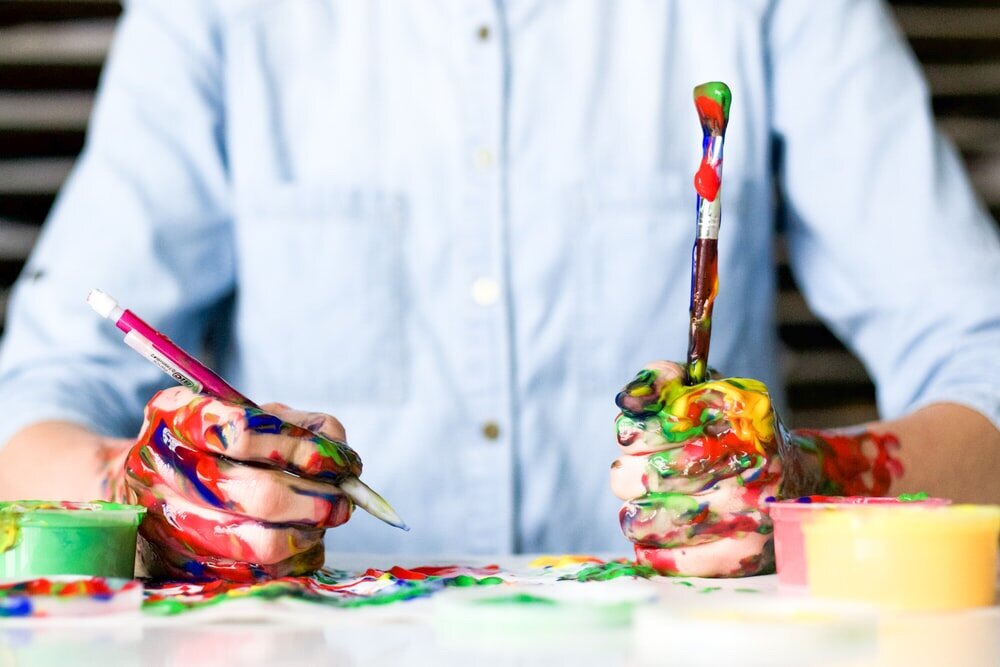5 Creative Exercises to Break Artist’s Block and Reignite Inspiration
Sometimes creativity flows naturally. Other times, it feels like someone yanked the plug out of your brain. If you’ve ever sat staring at a blank canvas or sketchbook wondering where your spark went—you’re not alone.
Creativity is a muscle. And like any muscle, it needs training.
Here are five practical, low-pressure ways to “train your creativity” and get back in the flow—even when inspiration feels miles away.
1. Make a Collage with a Kid (or Your Inner Kid)
Collage is one of my go-to creative workouts. It’s playful, spontaneous, and great for building imaginative strength—especially if you have kids.
Kids see the world differently. They’ll glue a giraffe head to a woman’s body, call it an alien, and build an entire story around it. That’s the kind of unfiltered thinking we want more of.
How to try it:
Hit a thrift store or secondhand bookshop. Look for large non-fiction books—history, cookbooks, home improvement manuals, space photography.
Grab scissors, paper, and glue.
Ask weird questions: What if this skyscraper had eyes? What if this chicken was flying through outer space?
Bonus: Just watching your kid make stuff without hesitation can be the most inspiring part of the exercise.
2. Set a Timer
Creativity thrives under constraints. Giving yourself a 15-minute challenge shuts up your inner critic and forces your brain to just go.
Before I begin a painting, I sometimes sketch a random object from memory using charcoal—no reference, no erasing, no fixing. Then I toss it and get started. The point isn’t perfection—it’s to wake up the creative part of my brain.
3. Play an Instrument (Even Badly)
Music and creativity are best friends. Playing an instrument activates the same areas of the brain responsible for creative decision-making.
Personally, picking up a guitar helps me stop overthinking. Sometimes it sparks a visual idea. Sometimes it just gives me mental space to breathe. Either way—it’s part of the ritual now.
4. Try a New Medium
Every year on my birthday, I try to learn something new. One year it was oil painting—something that stuck. Other years I’ve dabbled in watercolor, calligraphy, origami, even harmonica.
I didn’t become a master of all of them, but each one taught me something. And collectively, they trained me to flip the creative switch faster.
5. Copy Another Artist (Yes, Really)
Comparison can kill creativity—especially when you catch yourself thinking, “Why even try? I’ll never be as good as ____.”
Here’s the fix: copy them.
Not to steal, but to learn. I’ve recreated Van Gogh paintings, tried mimicking famous images in new mediums, even made “portraits” out of pasta and garden clippings. It’s not about the outcome—it’s about the exercise.
Final Thought: Creativity is a Practice
None of these exercises are about making masterpieces. They’re about warming up. About brushing the dust off your tools and getting past the “I don’t know where to start” phase.
You don’t need a big breakthrough—just a small spark.
Start cutting. Start strumming. Start copying.
Train the muscle. Flip the switch. Let the “what if” win.






